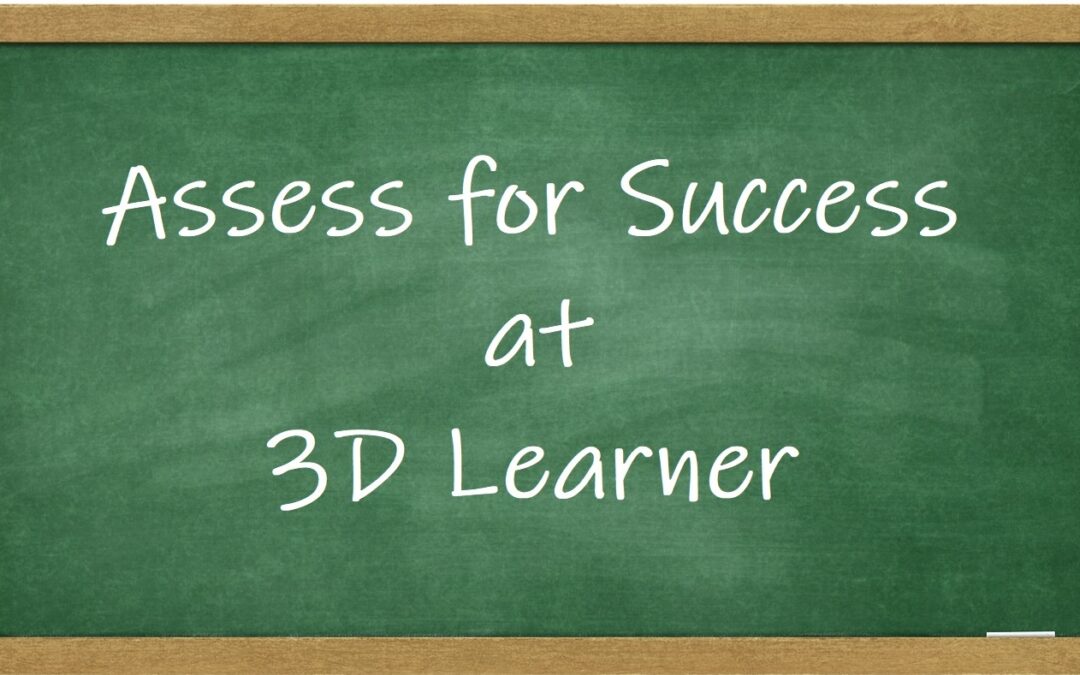
Students today are often struggling with reading fluency, reading comprehension and/or math.
Three of the greatest educational risks are:
- Parents often do not know what their child’s present level of reading fluency, reading comprehension and math skills are at
- Students who learn differently (i.e. neurodivergent, right brain and kinesthetic learners) often fall behind — as neither school based or home school curriculum may be consistent with how they learn best
- Without testing, parents may not be aware of how their child learns best, where their child is strong and where their child struggles
The opportunities for parents include:
- There are real benefits with an assessment that shows you::
- How your child learns best
- What are your child’s strengths and challenges
- What is your child’s present level of performance for reading fluency, reading comprehension and math
- If needed, the assessment can help educators to tailor a program to:
- Capitalize on how your child learns best
- Improve their reading speed, reading comprehension and math skills
- Help you to be the coach your child needs
- How you can help your child be all they can be
How 3D Learner Assesses for Success
Mary called and was not sure about her child’s reading fluency, reading comprehension and math skills were at. She had tried two years of dyslexia treatments. Mary was not interested in labeling, but she was very interested in knowing:
- How her daughter learned best
- What her daughter’s strengths and challenges were
- What was her child’s present level of reading comprehension, reading fluency and math
- If there were significant gaps, could we help her daughter get to grade level or above
- Whether what we offered could improve her child’s baseball and soccer skills. Mary knew that her daughter would be even more interested in help, if it could make her better at baseball or soccer.
Mary shared a few of her frustrations, that included, her daughter:
- Understood stories when Mary read them to her, but struggled with silent reading comprehension
- Read more fluently, but often had difficulty remembering words she had seen and not mastered
- Was good at math, but was now struggling with math word problems.
We then asked Mary what her daughter was good at, Mary shared that her daughter:
- Had an excellent memory for things she had seen and experienced
- Was a good person — who loved playing with younger kids and cared about seniors
- Was good at baseball and soccer but was inconsistent. Three area of concern were:
- Her daughter would sometimes lose focus during a game
- In baseball, she would sometimes hit the ball well, but too often she would pull the ball foul
- In soccer, her shots often went to the right side of the goalie
- Her daughter was frustrated that she was not doing as well as she wanted to
We shared this infographic with Mary and explained how we assess for how the student learns best and whether they have a visual processing, executive function, dyslexia and/or anxiety challenge.
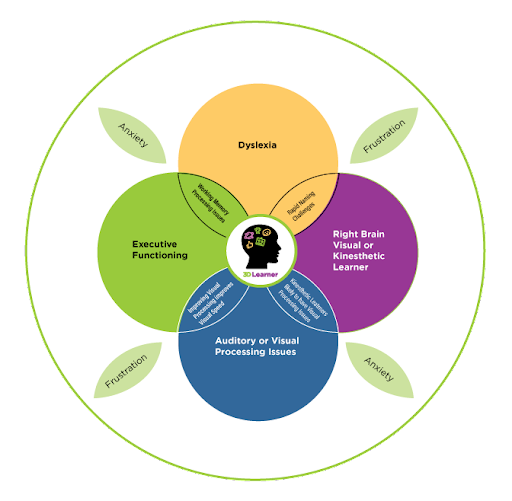
- Many smart struggling kids learn differently. They are often a neurodivergent, right brain or kinesthetic learner, who learn best when they see and experience information. This is important to know, because if they learn differently, it alters the way you teach them, the curriculum you may choose, how you parents them and how one coaches them in sports.
- 74% of the students we see have a visual processing issue – they may see the whole field or the whole room, but their eyes have difficulty converging. This often results in their skipping words and/or liens when reading and having difficulty catching a ball.
- The executive function challenges we often see may include:
- Difficulty sustaining attention and either being hyperactive or impulsive. When we assess a student with the Interactive Metronome ®, we often see that a student’s body moves faster than their brain. In sports, this results in hitting the ball too early. In baseball that would explain pulling it foul or for a right footed kicker, hitting the soccer ball to the right of the goalie. In life, the attention issues may results in a child losing focus when doing work or during a game
- The working memory assessment often shows a student has an excellent visual memory, but has difficulty remembering what they have heard or read
- The Dyslexia Assessment shows where a child is strong and where they struggle. We can assess for Dyslexia and we can also tailor a program that focuses on the key issues
- The reading comprehension assessment shows two different challenges:
- A number of students are below grade level
- Some students are at grade level, but the assessment shows they should and could be well above grade level
- Our math assessment shows us where a student is at and where they struggle
- The anxiety assessment often shows the student gets very anxious in certain situations
Mary asked about the tools we use and whether it is different from what schools and psychologists assess for. We shared that:
- The key assessment tool we use is the Structure of Intellect Assessment ® that shows how a student learns best, where they are strong and where they struggle.
Comments from a principal, a special educator and a psychologist
- A principal asked a special educator why their public school stopped using this assessment. The special educator said “We are required to find a disability in order to provide services. This assessment does not do that. 3D Learner has the luxury of focusing on tailoring a program to help a student succeed
- A psychologist commented, “I wish we could shift our focus from labeling to how to help a child succeed”
- The Visagraph ® we use to show if there is an eye tracking issue can show both the initial challenge and can be used post training to show the results Here is a video that shows a student’s eye tracking before and after training. He commented,. “I now enjoy reading and do much more of it”
- We use the Mindprint Assessment ® developed by by the University of Pennsylvania to assess executive function skills
- We use a Woodcock Johnson ® Reading Comprehensive Assessment
- We use the Core Dyslexia Assessment ® developed by the University of Florida to assess phonics, phonemic awareness and reading fluency. It also helps us to see if the child has dyslexia,
- We use the Perceptions Math Assessment ®
- We use Heartmath ® to assess for anxiety
When we assessed Mary’s daughter we did find that:
- She was a neurodivergent, right brain or kinesthetic learner who learns best when she sees and experiences information
- Her daughter had a number of skills that were well above grade level, but struggled with a few key skills
- She did have a significant visual processing issue
- Attention was an issue and her daughter’s body was racing faster than her mind This explained some of the self-control and sports related issues
- Her visual memory was excellent, but her auditory memory was weak
- She no longer has significant issues related to reading fluency, but there were some areas where she could benefit from additional training
- Her reading comprehension was a year below grade level
- Arithmetic was not an issue, but that word problems were
- Anxiety was an issue
Mary has the flexibility to prioritize training and her daughter was able to make significant gains over the next six months in reading comprehension, math, attention, visual processing, and self-esteem. Her baseball and soccer skills improved too. Mary commented that knowing my daughter was a neurodivergent learner with visual processing and executive function challenges changed everything, and addressing the whole child changed her life. She also added that by helping to improve my daughter’s baseball and soccer skills, you engaged her in the process.
If you would like to discuss your child’s situation and learn more about how we Assess for Success, you can call us at 561-361-7495 or click here to schedule an Assess for Success Conversation. Note, these assessments can be done in person or via zoom.
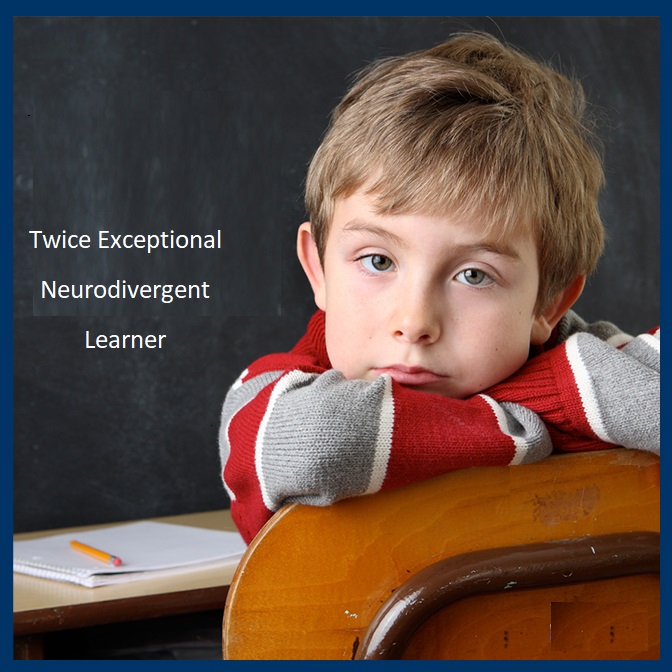
(Call 3D Learner at 561-361-7495 to put your Twice Exceptional Student on Their Pathway to Success)
“Twice exceptional” (2e) students refer to individuals who are both intellectually gifted or talented and may be neurodivergent learners with related challenges. This combination can present unique challenges and strengths in their learning experience. Twice exceptional neurodivergent learners may include those with conditions such as Executive Function issues, dyslexia, ADHD, autism spectrum disorder, or other learning disabilities.
I am Mira Halpert. I have my Master’s in Teaching the Gifted and Talented from the University of Michigan. I also have two twice exceptional children. After years of frustration with dyslexia treatments, learning centers and reading programs, I discovered both my kids were right brain kinesthetic learners. With the 3D Learner Program I developed, my daughter was able to improve her reading comprehension 4.2 grade levels in 7 months, improve her GPA from a 2.7 to a 4.4 and later earn her Master’s in Education from the University of Florida. My son improved his reading scores in elementary school, so that no more school remediation was needed, and he was able to participate in the highly gifted math program.
Over the last 26 years, 3D Learner has helped many twice exceptional students to succeed. Two examples include:
A student whose parents were told not to even apply to a rigorous college prep school, because if he got in he would not succeed. With our help, he was accepted by the school, became the valedictorian and later graduated from MIT.
While another student could solve high level math problems and was incredibly creative, he really struggled with the basics. We were able to improve his foundational skills and his confidence. He was able to succeed in school and is now thriving at the University of Chicago.
5 Things We Have Come to Learn About Twice Exceptional Neurodivergent Learners
1- Most of them are right brain kinesthetic learners, who learn best when they see and experience information
2- Many have significant executive function challenges. Some with working memory and processing speed scores that are far below what their intelligence potential is (these scores often impact their IQ score!).
3- Visual processing issues are quite common. They may have good peripheral vision, but they often skip words and lines when reading and make what appear to be “stupid” mistakes when doing math problems because their eyes do not work together.
4- Their academic performance is often far below their potential. In some cases, dyslexia, dysgraphia or other conditions may have them performing below grade level. In other cases, they may be performing at or above grade level, but they have the potential to do far better than that with the right help.
5- Schools or traditional programs often do not result in significant gains. The twice exceptional neurodivergent learner can benefit most from a program that plays to their strengths, identifies and addresses their challenges and boosts their self-esteem,
As the mom of the student who went to MIT said, “You changed his attitude and that was 90 percent of the battle”.
How 3D Learner Can Help Put Your Twice Exceptional Child on Their Pathway to Success
As parents, we wish we had access to both the right assessment and help for our daughter earlier in her life. To help parents, we are offering three ways to learn more:
1- Sign up for our Parents, Put Your Twice Exceptional Child on Their Pathway from Stress to Outrageous Success Webinar this Thursday evening January 11th at 9 pm.
Sign up and if you cannot make it, we will send you a replay.
2- Download our strengths and challenges infographic and get our series of posts on Getting It Right for Your Twice Exceptional Child.
3- Call us at 561-361-7495 and we can discuss how you can make the difference. If you want, we can also share how we Assess The Twice Exceptional Neurodivergent Child and how we help the Twice Exceptional Neurodivergent Child to Succeed with our 3D Learner Program ®.
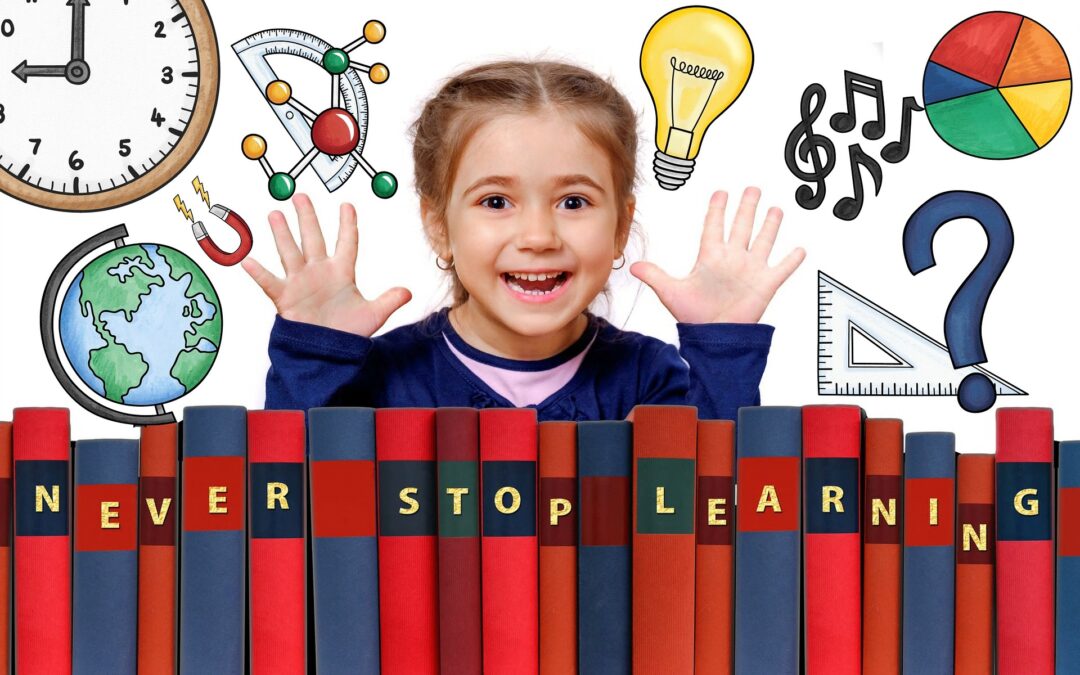
At 3D Learner, we focus on Getting It Right for students who are right brain, kinesthetic or neurodivergent learners, who often struggle with reading fluency and reading comprehension. Note, math and anxiety are often challenges, too.
In this post pandemic period, reading fluency and reading comprehension are major issues for many students. Math has become an even bigger problem, as reading comprehension issues are compounded by their lack of foundational skills.
As one parent commented, “The best time to intervene was a couple of years ago, the second best time is today”.
While the risks and opportunities are greater than ever, the key point is that it is
Up to Parents to Make The Difference
Is your child a bright right brain, kinesthetic or neurodivergent learner? Does this describe your child:
- Does your child remember places visited, even from years ago?
- Does your child learn best when he or she sees and experiences information?
- Is your child a lot smarter than present results would indicate?
- Does your child struggling with reading fluency, reading comprehension, math and/or anxiety
- Would you like to know how you can help your child to be far more successful, within months
This is the first in a 5-part series to Get It Right For Your Right Brain, Kinesthetic or Neurodivergent Learner.
This blog post will focus on the risks and opportunities facing parents and kids, and the unique role parents play in making the difference.
For the right brain, kinesthetic or neurodivergent learner,
it is up to the parents to make the difference
The second blog post will focus on the key Insights about these kids. Their unique strengths, challenges and their present level of performance — with a focus on both reading fluency and reading comprehension.
The third blog post will focus on Setting BOLD Goals for your bright right brain, kinesthetic or neurodivergent learner.
The fourth blog post will focus on Getting the Right Help to Get It Right for your bright right brain, kinesthetic or neurodivergent learner.
The last blog post will focus on the benefits of Taking Massive Action to Get It Right for your bright right brain, kinesthetic or neurodivergent learner.
The 7 biggest risks the right brain, kinesthetic and neurodivergent learners face are:
- They avoid silent reading and their reading fluency and reading comprehension gaps widen.
- Parents invest in a dyslexia treatment, which may be needed, but they do not realize these programs often do not address reading comprehension, visual processing and related skills.
- The right brain, kinesthetic and neurodivergent learners learn best when they see and experience information. These students often do not make the desired progress with traditional tutoring and other interventions that do not leverage their skills.
- These students often have visual processing, auditory processing and/or executive function issues (e.g. attention, working memory and processing speed) that are often not identified or addressed.
- Anxiety and frustration increase each year and their self-esteem and confidence declines.
- Reading fluency and reading comprehension issues start to impact a student’s performance in all other subjects.
- Parents change schools – often moving their child to a charter or private school. While these settings may help, they rarely address the reading fluency and reading comprehension issues.
3D Learner has been helping students to improve their reading fluency and reading comprehension for 28 years. We have also been working with prior voucher programs for close to 10 years.
Opportunities for Right brain, Kinesthetic or Neurodivergent Learners with Reading Fluency and Reading Comprehension Issues
- The right brain, kinesthetic or neurodivergent learner can often increase their reading comprehension by 2 or 3 grade levels within months
- Reading fluency gains can be significant
- Improvements in attention, visual processing and working memory can improve academic, athletic and related skills
- Anxiety and frustration can often be reduced, and the students can become far more confident and resilient
An Example Where a Student Needed far More Than a Dyslexia Treatment
Maria had been through two years of dyslexia treatments but was still struggling with reading fluency; her reading comprehension was two years below grade level, and she avoided reading.
Mom called us and in the first few minutes, we realized her daughter was a right brain learner, who learned best when she saw and experienced information and that she appeared to have a visual processing issue.
Further testing confirmed the learning difference and visual processing issue and revealed this second grade had some reading fluency issues and her reading comprehension was at the kindergartener level.
With our help, her reading fluency improved, her reading comprehension improved 2 grade levels in 4 months and 3 grade levels in 7 months, and she read 23-chapter books over this period.
Reading Fluency and Reading Comprehension Gaps Can Be Larger for Older Student
Gina had a significant reading fluency and reading comprehension issue. It turned out her reading comprehension was 5 years below grade level, and she was struggling with her homeschool curriculum.
With our help, her reading fluency improved, her reading speed doubled, she improved her reading comprehension 4 grade levels in 6 months, and she was able to do all her schoolwork.
The Path to Improving Reading Fluency and Reading Comprehension Starts with Asking the Right Questions
We often start with 5 key questions:
- Is reading fluency an issue for your child?
- What is your child’s present level of reading comprehension?
- Is your child a right brain, kinesthetic or neurodivergent learner? Note, many students who struggle with reading fluency and reading comprehension are a right brain, kinesthetic or neurodivergent learner, who learn best when they see and experience information.
- Does your child have a visual processing issue? 74 percent of our students skip words and lines when reading. People will argue that visual processing does not cause dyslexia — that is true. However, a visual processing issue makes reading very difficult and often leads to students avoiding silent reading.
-
Did you realize that you can leverage the Florida Empowerment Scholarship for Unique Abilities to help your child to significantly improve his or her reading fluency and reading comprehension in months?
We are offering a focused assessment that addresses the following.
-
Your child’s reading fluency strengths and challenges, using the UFLI Core Assessment ®- the University of Florida’s Literacy Institute’s Assessment
-
Your child’s present level of reading comprehension
-
Whether your child appears to be a right brain, kinesthetic or neurodivergent learner
-
Whether your child appears to have a visual processing issue
-
How you might can capitalize on your child’s strengths and address their challenges to significantly improve your child’s reading fluency and reading comprehension issues in months
To take advantage of this offer,
call us at 561-361-7495 to discuss your situation
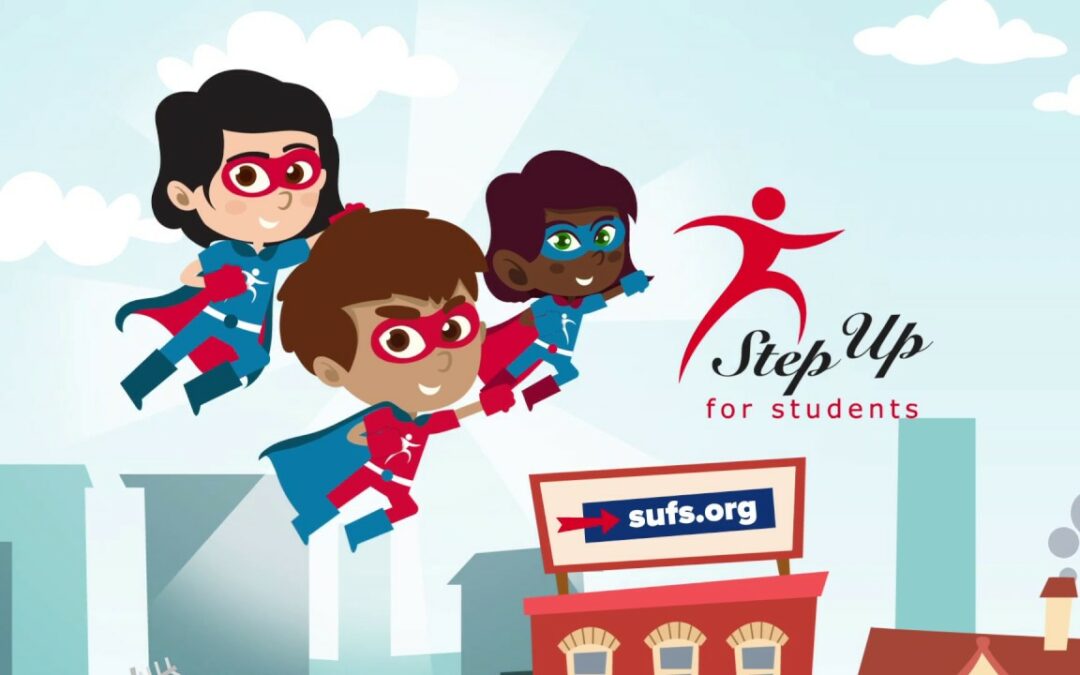
Sign up for one hour of training and we will provide valuable insights on whether your child has dyslexia, their present reading comprehension level and more.
Our focus is on the visual learner, kinesthetic learner or neurodivergent learner, who learns best when he or she sees and experiences information. We also identify and address dyslexia, ADHD, visual processing issues and executive function challenges.
We are Dyslexia certified trained for the UFLI ® Program — the University of Florida’s Reading Intervention that incorporates a Core Assessment, and an engaging and effective dyslexia treatment. This is an Orton-Gillingham based program.
Call us at 561-361-7495 to discuss your situation or to schedule a time to
Discuss How Your Child Can Make Significant Gains in months

The Florida Empowerment Scholarship for Unique Abilities (FES – UA) has been changed. They are now accepting new students through December 15th, 2023. This is for homeschool and private school students with a qualifying disability. Here is a list of qualifying disabilities. Parents can register at https://www.stepupforstudents.org/scholarships/unique-abilities/ (FES UA).
According to our sources, those granted the FES – UA scholarship now will be given the full scholarship amount for the year. This will allow for an intensive and game changing effort.
We provide integrated, engaging and effective training – both live in Coral Springs and Boca Raton and via zoom.
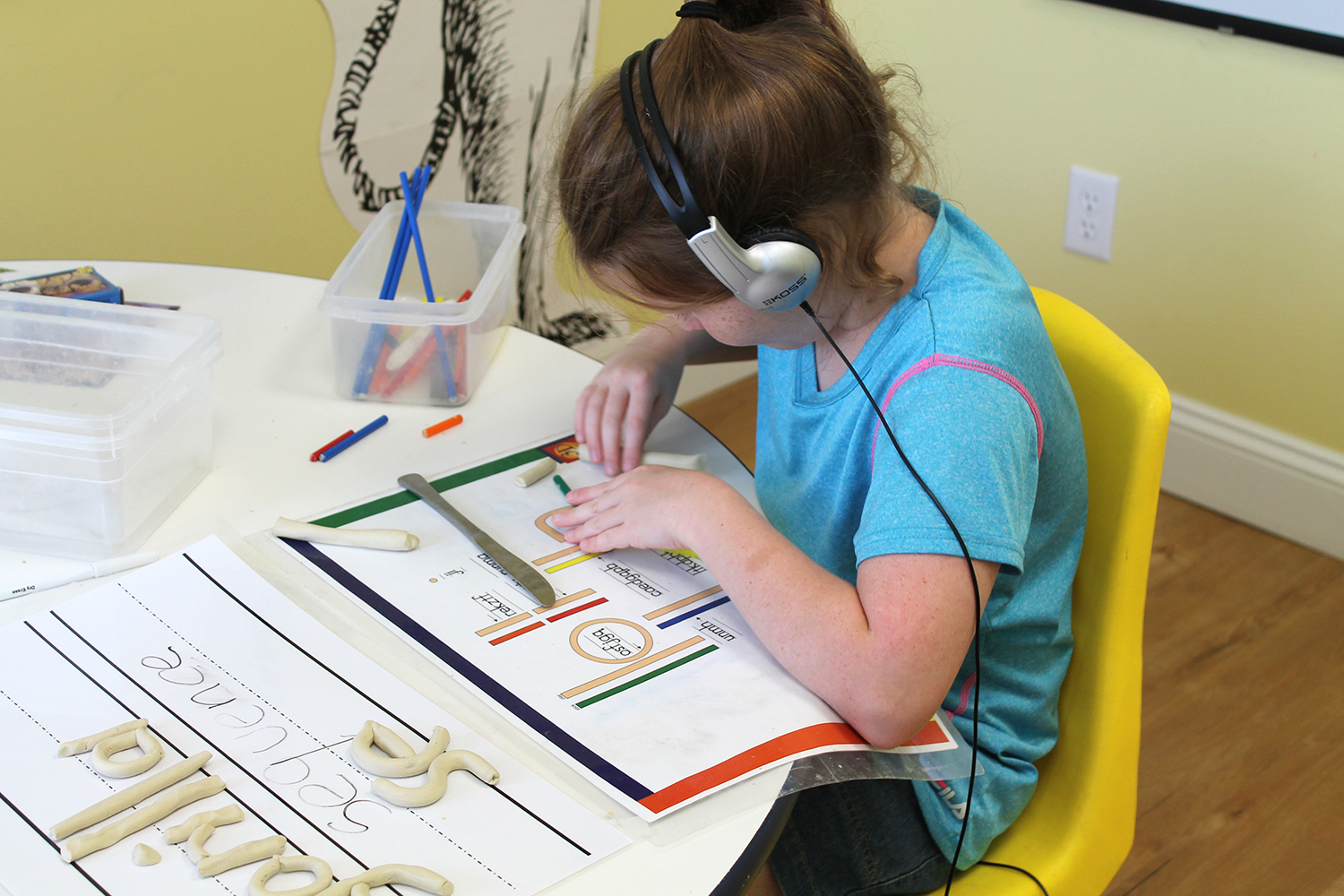
If you have any questions or would like to discuss how we can help your child and you, call 3D Learner at 561-361-7395 or click here to schedule a Conversation on How The Florida Empowerment Scholarship for Unique Abilities can help your child
3D Learner is a provider for this program
Homeschool successes with 3D Learner. We have helped:
7 ways 3D Learner is different than any other provider:
- Our hands-on program is designed to help the right brain learner, kinesthetic learner or neurodivergent learner who learns best when he or she sees and experiences information,
- We address both reading fluency and reading comprehension. We have had students make 2, 3 and even 4-year gains in their reading comprehension in 4 to 6 months. While we are a hands-on program, we also address phonemic awareness and reading fluency with the University of Florida’s UFLI Program ®.
- We identify and address executive function, visual processing and related issues,
- We strive to ignite a love for learning, while boosting self-esteem
- We help parents to be even more effective coaches for their child,
- We tailor our program to meet the individual child’s needs. We can also address math and writing issues.
- Our assessment, that can be done live or online, will show a parent:
- How your child learns best
- Their learning strengths and challenges
- Whether there is an executive function or visual processing issue
- The child’s present level of performance for both reading fluency and reading comprehension
Note, we do provide our services in Boca Raton and Coral Springs, FL and via zoom.
If you have any questions or would like to discuss how we can help your child and you, call 3D Learner at 561-361-7395 or click here to schedule a Conversation on How The Florida Empowerment Scholarship for Unique Abilities can help your child.
3D Learner is best known for helping bright right brain kinesthetic learners succeed. These are the students who learn best when they see and experience information and who are often a lot smarter than present results would indicate.
3D Learner has helped many homeschool and private school students improve their:
- Reading fluency
- Reading comprehension — often, but two, three or even four grade levels in months
- Self-confidence and so much more (e.g. attention, executive function skills, math etc.)
Our first goal is to help parents with a child who learns differently to realize their child can do far better with strength-based training. We often start with a no cost Stress to Success Conversation parents can have by either calling us at 561-361-7495 or clicking on Stress to Success Conversation and finding a mutually agreeable time to talk.
Our second goal is to help you as a parent to understand your child’s reading fluency and reading comprehension levels and to determine where your child is at, what help they need, and to tailor a solution to help your child to be all he or she can be.
If you have any questions or would like to discuss how we can help your child and you, call 3D Learner at 561-361-7395 or click here to schedule a Conversation on How The Florida Empowerment Scholarship for Unique Abilities can help your child

A dyslexia treatment that follows the Science of Reading will help Reading Fluency but may not significantly improve reading comprehension.
The challenge is that many students with dyslexia are also a right brain kinesthetic learner, who learns best when he or she sees and experiences information. For the right brain kinesthetic learner with dyslexia, additional strategies and interventions may be necessary to address their specific challenges.
The Science of Reading is an evidence-based approach to teaching reading that emphasizes phonics, phonemic awareness, and other foundational skills. While it is effective for improving reading fluency, it’s important to note that reading comprehension is a multifaceted skill that involves various cognitive processes beyond just decoding words.
Note, if your child does not have dyslexia but learns differently, all the other efforts discussed below to improve visual processing, executive function skills and reading comprehension may be needed.
Note, these students’ profiles often include a combination of 2, 3 or 4 of the following: the student often learns differently, has auditory or visual processing issues, and very often has more than one executive function challenge that may include attention, working memory, processing speed and …
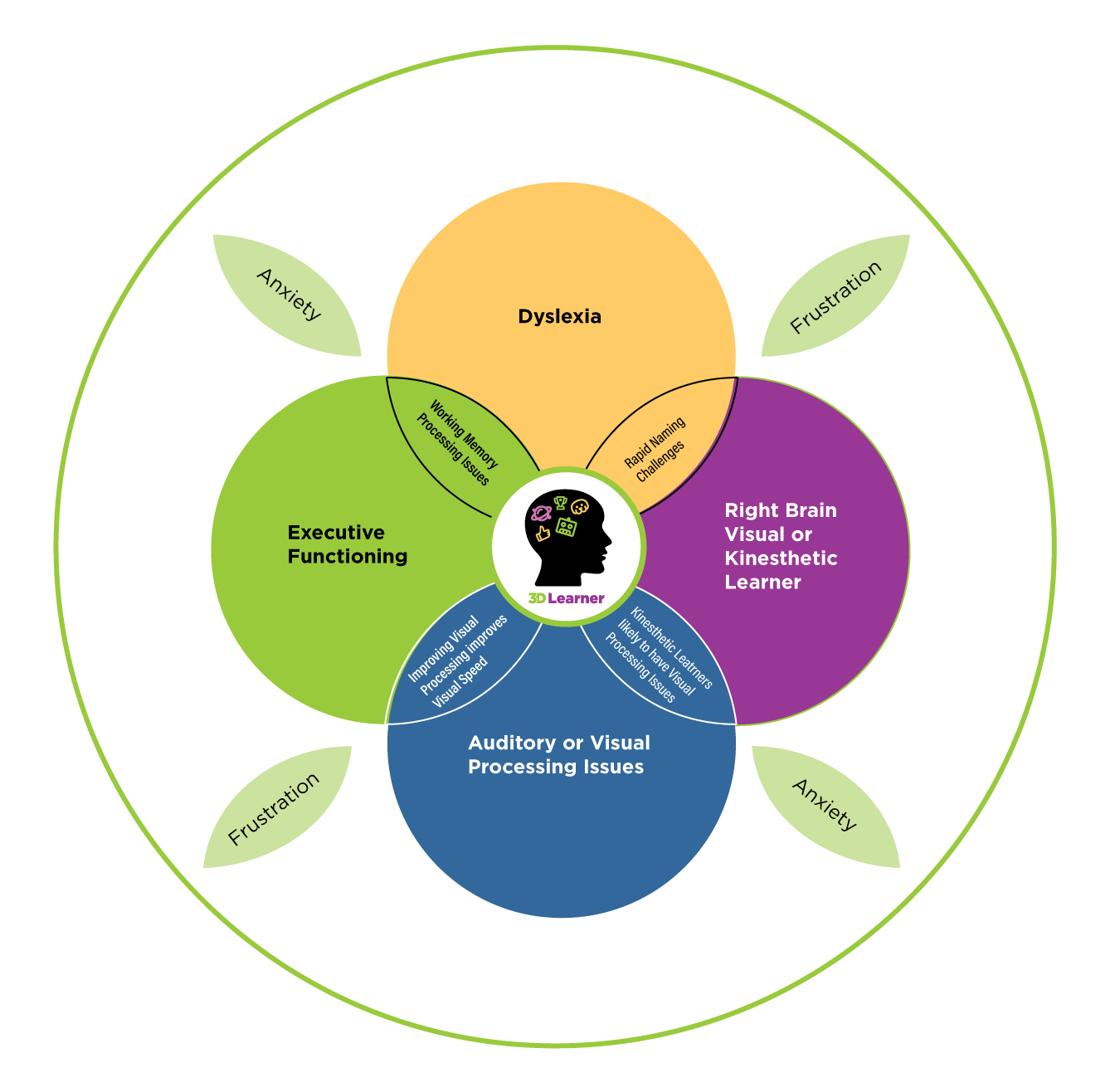
Most students with dyslexia are also a right brain, visual or kinesthetic learner with a visual processing and/or executive function challenge.
Specific problems we see in right brain kinesthetic learners with dyslexia may include:
Problems recognizing words they have seen and not mastered.
Vocabulary instruction: Enhancing word knowledge is crucial for understanding the meaning of texts.
Sight word vocabulary — where the right brain kinesthetic learner does not have a picture for what the words mean.
Visual processing issues frequently occur in this population.
Working memory. A dyslexia treatment and building language skills often requires students to learn and remember rules. This can be difficult for a student with a weak memory.
Processing speed. Many students with dyslexia process information slowly, but it can be improved.
Reading comprehension strategies: Teaching specific strategies, such as visualizing, summarization, questioning, and making connections to their own experiences, can help students with dyslexia improve their comprehension skills. For the right brain kinesthetic learner, the student will often benefit from a hands-on and visual approach that teaches them what the word looks like and creates a visual for what the words and passages mean.
Text structure or sequence awareness: Understanding how different types of texts are structured can aid comprehension. Explicit instruction in recognizing and understanding sequences can be helpful.
Background knowledge development: Building background knowledge using pictures or videos can improve comprehension. Reading a wide range of texts on different topics and relating to their own experiences can contribute to this.
Explicit instruction in comprehension skills: Providing direct instruction in specific comprehension skills, such as identifying main ideas, drawing conclusions, and making predictions, can be beneficial.
It’s important to recognize that dyslexia is a neuro-biological condition that affects the way the brain processes written and spoken language. As such, a comprehensive and individualized approach to intervention is often necessary, taking into account the unique needs and strengths of each student with dyslexia.
To improve reading fluency and reading comprehension for students with dyslexia who are right brain kinesthetic learners, the student often needs:
- A dyslexia treatment to improve reading fluency.
- A more visual kinesthetic approach to word recognition, spelling and vocabulary.
- Auditory and/or visual processing issues identified and addressed.
- Executive function issues identified and addressed.
- Reading comprehension strategies that utilize relevant text and that leverage the student’s ability to learn best when they see and experience information.
If you would like to discuss your situation, you can either call us at 561-361-7495 or click here to find a time on our schedule to discuss “Your Right Brain Kinesthetic Learner with Dyslexia”.

(Call us at 561-361-7495 if you would like to discuss how your child can make significant progress this summer)
70% of our clients contact us to improve their child’s reading comprehension and executive function skills. 30% of our clients want to improve reading comprehension and executive function skills and have a Dyslexia Treatment to improve their child’s reading fluency, too.
As of July 1, we will be entering our 27th year in business. What is really troubling is that more students than anytime in our career are further behind in reading fluency, reading comprehension and math. To make matters worse, more students lack the foundational skills and confidence needed to succeed. Our goal is to help our students to make significant gains in months, to address the relevant academic skills and to identify and address the key foundation skills that are missing. We also strive to reduce anxiety, boost confidence and instill a love for learning.
If you want to have a conversation on Creating a Pathway from Stress to Outrageous Success for your child,
– Call us at 561-361-7495 or
– Find a mutually agreeable time on our schedule by clicking on Let’s Schedule a Conversation.
On Thursday May 4th, we will be hosting a webinar at 8:30 pm on a
Summer Program to Dramatically Improve Reading Fluency, Reading
Comprehension, Executive Function Skills and Confidence.
Click here to register for our Parents make The Difference Webinar
What makes 3D Learner a unique offering:
- We tailor our program to meet the key goals we set with parents. These might include: improving reading comprehension by 2, 3 or even 4 grade levels in 4 to 6 months; improving reading fluency; improving attention, working memory and/or processing speed; addressing visual processing in a way that improves academics and athletic skills: and/or reducing anxiety, building confidence and igniting a love for learning
- Our assessment process evaluates reading fluency, reading comprehension, executive function skills, visual processing, how your child learns best, where your child is strong and where they struggle. We then incorporate a debrief that results in setting goals for the next 4 to 6 months. If you would like, we then provide program options that can address some or all of the relevant issues.
Our process allows us to identify the bright right brain kinesthetic learner, who is often much smarter than present results would indicate. We also provide an in-depth look at how your child’s eyes track when reading; whether your child has an attention, working memory and/or processing speed issue; and to what extent there are issues with decoding, phonemic aware, and reading fluency
 Our process starts with an assessment that identifies: the right brain kinesthetic learner; whether there are a visual processing, working memory, processing speed and/or attention issue; whether dyslexia is present; and your child’s present level of reading comprehension.
Our process starts with an assessment that identifies: the right brain kinesthetic learner; whether there are a visual processing, working memory, processing speed and/or attention issue; whether dyslexia is present; and your child’s present level of reading comprehension.
We also provide parent training that helps you to become even more effective coaches and advocates for your child.
- We use the UFLI Program ® to improve decoding, phonemic awareness and reading fluency, where needed. This program moves at a faster pace than most, but reinforces what the student has learned throughout the process. This is a dyslexia treatment that fits well into our program.
- We target the areas of greatest need. Often this includes some combination of reading comprehension, reading fluency, executive function, visual processing and reducing anxiety, while building confidence. Note, the length of our program depends on your child’s needs and your goals.
It is important to note, that while a number of our students have made considerable gains, these are not possible for all students. We see the most significant gains in the student with above average and even gifted IQs who are performing well below their potential. We strive to be BOLD but realistic when we set goals.
Note, our program was designed for our daughter who was able to improve her reading comprehension 4.2 grade levels in 7 months. Today, our clients are mostly between the ages of 6 and 17.
What delights us is that we can help students to make significant gains. The first place we really make the difference is with our initial conversation. Three examples:
- Mom called with a problem that is impacting many students today. The private school her son attended suggested she find a different school for her son, based on his reading comprehension being 2 years below grade level. She called us and after 10 minutes she commented, “How is it you know my son better than anyone at his school who have known him for 4 years”. She came to us from out of state and her son improved his comprehension 3 grade levels in a year. His teacher said, “Thomas made more progress in a year than any student I have had in 27 years of teaching
- Mom called from the state of Washington. She had been told her son was a right brain visual learner, who learned best when he saw and experienced information. She too was surprised how well we knew her child. Her son was able to improve his reading comprehension 4 grade levels in 7 months and blossom as a student.
- A local mom called us. She heard about us from a friend, where we had helped her friend’s gifted son go from the 58th to the 99th percentile in reading comprehension. Note, he later went to MIT. Mom had a son who was smart, but his reading comprehension was 4 years below grade level. Her challenge was that her son did not realize how smart he was. Our assessment showed that as he was about to enter 9th grade, he was at college level on 9 out of the 26 skills we assessed and only had 4 areas where he was weak. For the first time he saw himself as a smart kid who learned differently. In less than 4 months, he was able to improve his reading comprehension from the 5th to the 9th grade level and increase his reading speed from 200 to 360 words per minute. He went onto get several full college scholarships
All this starts when the parents engaged in a conversation to discover how her child could succeed.
Click here to register for our Parents make The Difference Webinar
If you want to have a conversation on Creating a Pathway from Stress to Outrageous Success for your child,
– Call us at 561-361-7495 or
– Find a mutually agreeable time on our schedule by clicking on Let’s Schedule a Conversation
Our Assessment Special
Complete a Comprehensive Assessment in May and receive the Safe and Sound Protocol ® — ordinarily a $300 investment — that will help your child and you reduce stress and anxiety
.


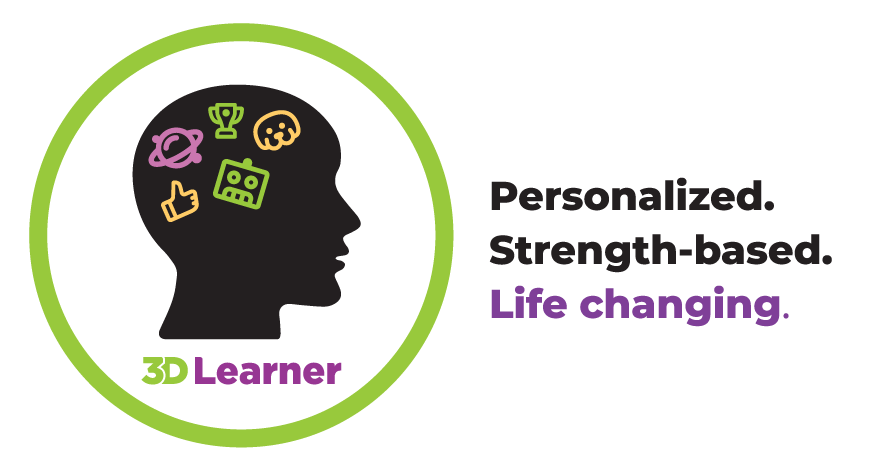
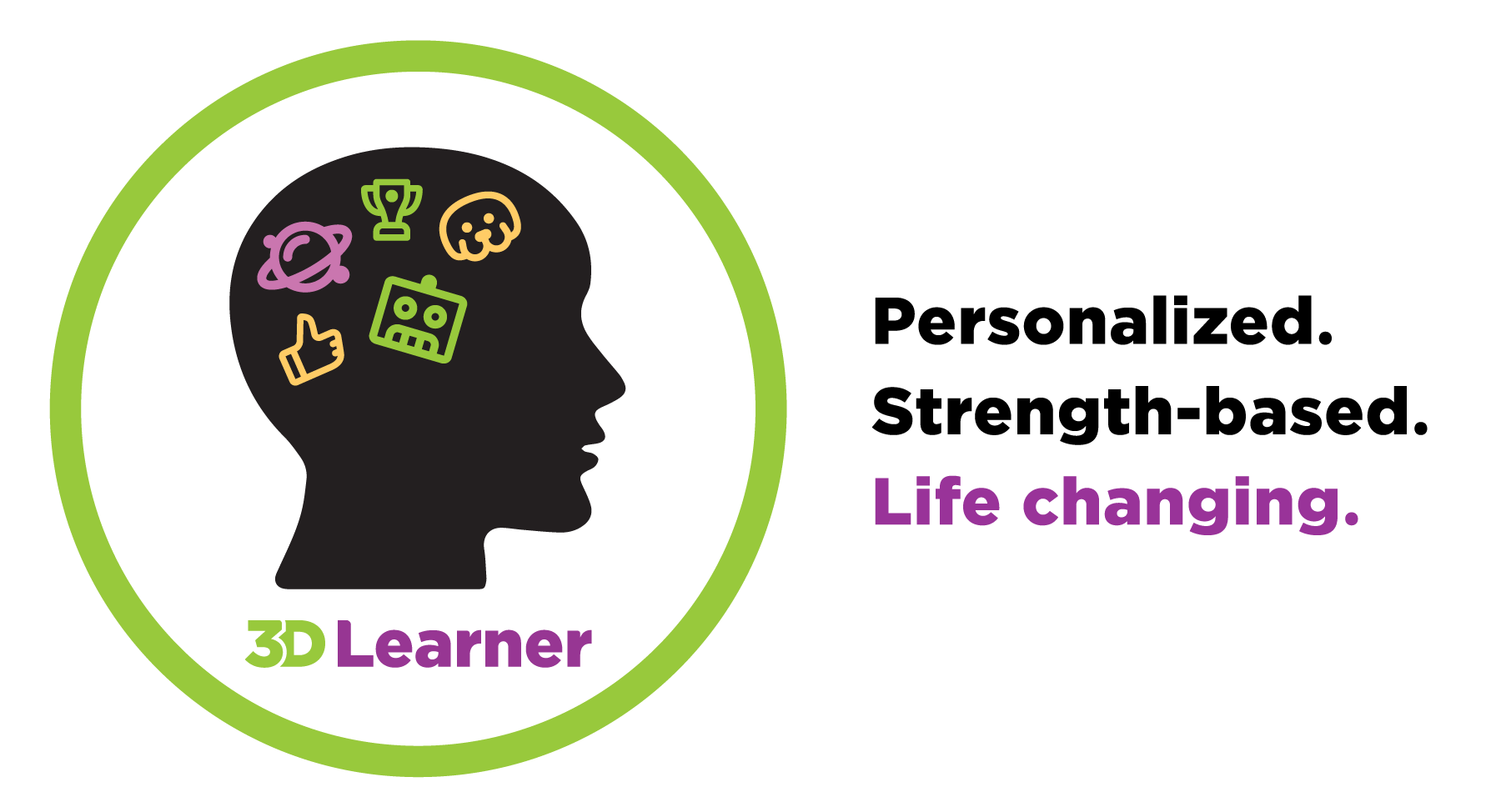








Recent Comments